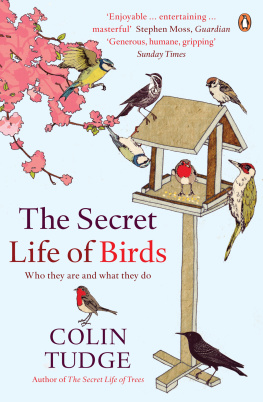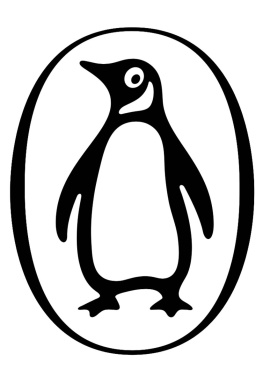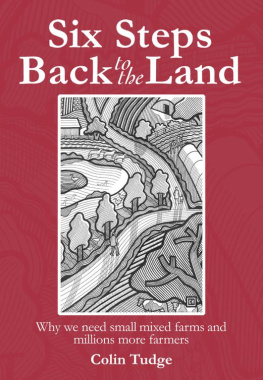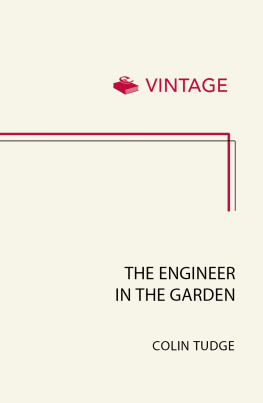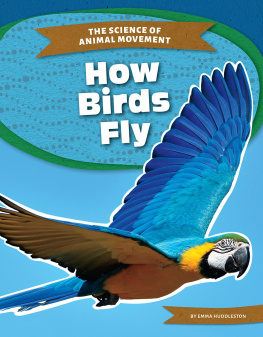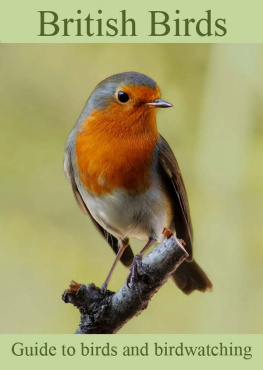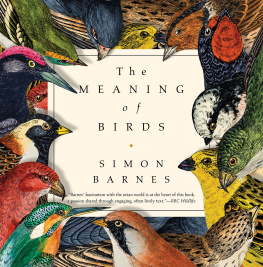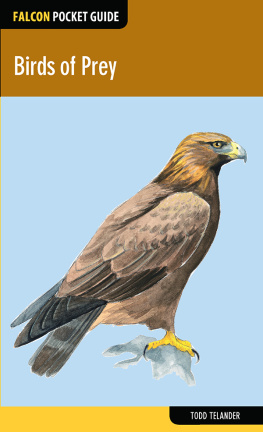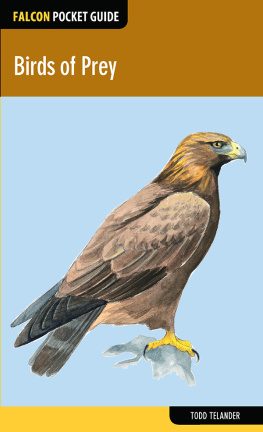COLIN TUDGE
The Secret Life of Birds
Who they are and what they do

PENGUIN BOOKS
PENGUIN BOOKS
Published by the Penguin Group
Penguin Books Ltd, 80 Strand, London WC2R 0RL , England
Penguin Group (USA) Inc., 375 Hudson Street, New York, New York 10014, USA
Penguin Group (Canada), 90 Eglinton Avenue East, Suite 700, Toronto, Ontario, Canada M4P 2Y3
(a division of Pearson Penguin Canada Inc.)
Penguin Ireland, 25 St Stephens Green, Dublin 2, Ireland
(a division of Penguin Books Ltd)
Penguin Group (Australia), 250 Camberwell Road, Camberwell, Victoria 3124, Australia
(a division of Pearson Australia Group Pty Ltd)
Penguin Books India Pvt Ltd, 11 Community Centre, Panchsheel Park, New Delhi - 110 017, India
Penguin Group (NZ), 67 Apollo Drive, Rosedale, North Shore 0632, New Zealand
(a division of Pearson New Zealand Ltd)
Penguin Books (South Africa) (Pty) Ltd, 24 Sturdee Avenue, Rosebank, Johannesburg 2196, South Africa
Penguin Books Ltd, Registered Offices: 80 Strand, London WC2R 0RL , England
www.penguin.com
First published as Consider the Birds by Allen Lane 2008
Published under the current title in Penguin Books 2009
Copyright Colin Tudge, 2008
Illustrations copyright Jane Milloy, 2008
All rights reserved
The moral right of the author has been asserted
Except in the United States of America, this book is sold subject
to the condition that it shall not, by way of trade or otherwise, be lent,
re-sold, hired out, or otherwise circulated without the publishers
prior consent in any form of binding or cover other than that in
which it is published and without a similar condition including this
condition being imposed on the subsequent purchaser
ISBN: 978-0-14-196210-8
PENGUIN BOOKS
THE SECRET LIFE OF BIRDS
When Colin Tudge was a small boy in South London he could recognize only five kinds of bird. Following a childhood spent at London Zoo and in conversation by the seaside with a bird-watching cousin, he began to perceive that ordinary birds included pipits and wagtails, terns and kestrels, yellowhammers and robins, and a miscellany of crows, not all of which were black. So began a lifelong interest in birds and how they live.
After studying zoology at Cambridge, Colin began writing about science, first as features editor at the New Scientist and then as a presenter of science programmes for BBC radio. Now a full-time writer, he appears regularly as a public speaker in all kinds of venues, including the University of Beijing and St Pauls Cathedral. A Fellow of the Linnean Society of London, he also spent ten years as a visiting Research Fellow at the Centre of Philosophy at the London School of Economics. He is passionate about food and farming and is currently involved in the founding of The Landshare Trust for Enlightened Agriculture. His books include The Secret Life of Trees, The Variety of Life and So Shall We Reap.
To my grandchildren
Illustrations
Figures
)
.
Acknowledgements
I was first launched on the road to bird-dom by my cousin Peter Selwood, who lived by the sea and is a few years older than I am, and first made me aware that not all birds are the sparrows, pigeons, and park pond ducks of my native South London. There are pipits and hobbies and terns and goodness knows what out there (not least in South London, had I but realized). I was prompted to start writing this book by my old university friend Barrie Lees when I was half-way through writing my book on trees. Trees are all very well, he said, but birds do more. I want to know about birds and I thought, Why not?
In general I am indebted to everyone who ever taught me biology although for the particular purposes of this book I am especially grateful to the following, who gave me advice and in some cases read the various chapters. Roughly in the order in which I talked to them: Luis Chiappe and Joel Cracraft at the American Museum of Natural History, New York, with whom I had long and absorbing conversations on bird evolution and phylogeny. Carl Jones of the Mauritius Wildlife Foundation taught me a great deal about bird conservation his own work in saving the Mauritius Kestrel is a conservation classic. Roger Wilkinson, director of science at Chester Zoo (now the leading zoo in mainland Britain), was curator of birds when I first did some work for Chester in the 1990s and he very kindly read the longest chapter for me. When I was attached to the Darwin Centre at the London School of Economics I learned a great deal about the evolution of animal minds from Helena Cronin, Nick Humphrey, Oliver Curry, and Jennifer Scott (whose work on gorillas is quite brilliant). At Oxford, I have received generous help from Andrew Lack of Brookes University and from Alex Kacelnik from the Department of Zoology at Oxford University. David Mcfarland, previously at Cambridge, also greatly improved my appreciation of animal psychology, and the philosophy thereof. From Warwick Fox at the University of Central Lancashire I have learned much of what I know about theory of mind. Neal Smith, a wonderfully original thinker at the Smithsonian Institution in Panama, has alerted me to quite new lines of thought over the past few years and again read passages of this book. I am very grateful to Richard Holdaway of the University of Canterbury for discussions on bird migration (and look forward to the publication of his present research, which promises to put a new slant on the whole subject). Many thanks too to Professor Tom Kemp, of Oxford University, who read and advised on matters of evolution. My neighbour Ian Lees, an accomplished birder and bird photographer, read bits of the text for me and made some cogent comments. The best birding I have ever done was in the company of John Butler in Spain, but when I sought to remind myself of his address on his website I was shocked to learn that he died in September 2007 a very sad loss indeed, for all kinds of reasons. (Brian Davies and Yolanda Davies-Papen are to continue his work. Their website Donana Bird Tours should surely be checked out.)
After all of the above had given me their input, the draft was greatly improved by Helen Conford of Penguin Books, who got me to do a lot of restructuring; and the finished text was enormously enhanced by the brilliant illustrations of Jane Milloy.
Finally, I am absolutely indebted to my wife, Ruth West, off whom I bounce all ideas and without whose encouragement and organizational skills I would surely have lapsed into total inertia years ago.
Colin Tudge, Wolvercote, February 2009
Preface
As a small boy in South London just after the Second World War I recognized only five kinds of birds. There were pigeons and sparrows, which were everywhere; the ducks and swans in the local parks; and a mixed category of ordinary birds which flew overhead from time to time, and perched on roofs, for no particular reason, except that they were birds, and thats what birds do. London Zoo soon broadened my horizons, with its Ostriches, Emus, and penguins, a statutory line-up of torpid owls like fluffy Russian dolls with revolving heads, and a huge array of parrots (London Zoo had two of each species in those days or sometimes only one of each). There was also a mad-eyed creature in a tall Gothic cage labelled Monkey-eating Eagle, which opened its vast horny beak in a most suggestive fashion and frightened us all to death. Then my cousin Peter, out in Kent, conceived a passion for bird nesting which boys were still encouraged to do in those days, along with the pinning of butterflies after giving them a quick whiff of chloroform (which may be had from your local chemist for a few pence); and I began to perceive that ordinary birds included pipits and wagtails, terns and Kestrels, Yellowhammers and Robins, and a miscellany of crows, not all of which were black.

